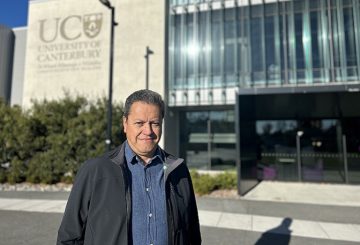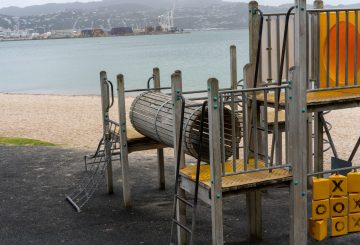Thanh thiếu niên đang kết thúc học kỳ thứ ba ngày hôm nay với 93.000 điểm đỗ đạt NCEA ít hơn so với cùng thời điểm năm ngoái.
Các số liệu được cung cấp cho RNZ bởi Cơ quan Quản lý trình độ cho thấy các trường đã báo cáo 1.4 triệu đạt được, thành tích và kết quả xuất sắc cho cơ quan cho đến nay năm nay, ít hơn 6% so với năm ngoái và ít hơn 20% so với cùng thời điểm năm 2019.
Các số liệu cho thấy Auckland, khu vực bị ảnh hưởng nhiều nhất bởi các đợt ngưng hoạt động trong năm nay, đã báo cáo kết quả NCEA ít hơn 4% so với năm ngoái trong khi các khu vực bao gồm Gisborne, Marlborough và Otago có kết quả ít hơn 10-12%.
Họ cũng cho thấy có nhiều kết quả không đạt được hơn 7% so với cùng thời điểm năm ngoái, nhưng ít hơn so với năm 2019.
Chủ tịch Hiệp hội Hiệu trưởng Trung học Vaughan Couillault nói rằng ông đã không ngạc nhiên các trường đã báo cáo kết quả ít hơn cho Cơ quan Quản lý trình độ cao hơn năm ngoái.
“Một trong những điều về khóa cửa này khá khác với những gì chúng tôi đã trải qua năm ngoái là sự gần gũi của nó vào cuối năm nay. Trong khi trước khi chúng tôi đi vào khóa dữ liệu có thể cho thấy chúng tôi đi trước một chút về kết quả được báo cáo tích cực, vài tháng sau đó mọi thứ đã chậm lại đáng kể”, ông nói.
Couillault cho biết có khả năng nhiều trường đã hoàn thành và đánh dấu các đánh giá nội bộ mà họ cần kiểm tra lại trước khi báo cáo với NZQA.
“Điều đó tạm dừng một chút ở một số khu vực hoặc với một số phần đánh giá sao cho có một chút tồn đọng và tôi sẽ nghi ngờ rằng khi chúng tôi trở lại cấp hai và trở lại mặt đối mặt sẽ có một chút tăng đột biến về số lượng kết quả được báo cáo tích cực đi qua NZQA, “Ông nói.
Josiah Aliimalemanu từ trường trung học Onehunga nói với RNZ rằng khóa đã ngăn cản anh hoàn thành một số đánh giá nội bộ.
“Tôi đã có rất nhiều đánh giá vào khoảng tuần này nhưng đối với các buổi biểu diễn âm nhạc, bạn không thể thực sự làm điều đó trực tuyến, và các đánh giá thể chất mà bạn không thực sự làm được,” ông nói.
Josiah nói điều đó có nghĩa là ông sẽ phải thực hiện các bài đánh giá trong học kỳ tới khi ông muốn chuẩn bị cho kỳ thi.
Học sinh Lớp 13 Faith Fineanganofo cho biết việc hoàn thành các bài đánh giá nội bộ ở nhà khó hơn so với trong lớp học và cô rất thất vọng vì sẽ phải dành một số kỳ nghỉ để chuẩn bị cho các bài đánh giá nội bộ học kỳ tới.
Hiệu trưởng của trường, Deidre Shea, cho biết thời điểm khóa cửa năm nay đã làm cho nó gây rối hơn so với khóa cửa quốc gia năm ngoái và các khóa cửa Auckland sau đó.
“Chúng tôi đang cọ xát vào giai đoạn cuối năm về đánh giá, điều đó có nghĩa là học sinh đã bị thiệt thòi hơn so với năm ngoái bởi vì họ đã gần hoàn thành, trong một số trường hợp, những công việc khi chúng tôi bước vào khóa học.”
Cô nói rằng các trường học sẽ đảm bảo cho học sinh rằng ngay cả khi các em chưa hoàn thành nhiều như bình thường, các em vẫn có thời gian để bắt kịp.
“Sẽ có cơ hội để tiếp tục học tập và với thành tích của họ và vì vậy không nhấn mạnh quá nhiều nếu họ không ở vị trí ngay bây giờ để hoàn thành một đánh giá hoặc để thực hiện một đánh giá ngay từ đầu,” cô nói.
Shea cho biết các tín chỉ học tập bổ sung có sẵn cho sinh viên trong năm nay sẽ đủ để lấp đầy bất kỳ thiếu sót nào trong thành tích của sinh viên.
Phó giám đốc điều hành đánh giá Andrea Gray cho biết sự sụt giảm trong kết quả báo cáo là không đáng ngạc nhiên.
“Học kỳ 3 thường là khi các trường có kế hoạch đánh giá đáng kể, do đó, với thời gian khóa học, kết quả báo cáo giảm so với năm ngoái và 2019 là không đáng ngạc nhiên,” cô nói.
Cô cho biết những thay đổi trong năm nay đối với NCEA và vào Đại học được tính toán để phản ánh thời gian khóa học và khoảng thời gian học sinh đã rời khỏi lớp học của mình.
NGUỒN: Tin tức RNZ






























































